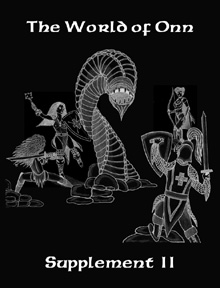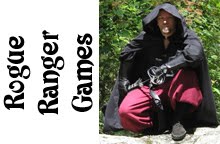Few things scare the hell out of old school players like petrification and energy draining. These are attack forms for which few recourses are available to reverse and in some situatons, are irreversible. Energy draining in particular is nasty for a character as in the most common form of D&D and its variant rulesets energy draining removes experience points from a character and lessens his effective level on the spot. No saving throw, no immediate recourse. Being hit multiple times results in multiple level losses (and some creatures can do so with each attack!) and create diminishing returns on a character's experience points on defeat of the creatures.
Also, the determining method as where the character ends up on the experience points needed to level from his newly reduced level depend on the game and version - from the minimum needed to be the new level, to the midpoint, to just 1 point shy of the old level. Experience is used as a nebulous measure of how much a character has learned / been through / understands what he has lived through, but yet the draining creature gains no benefit (other than healing a few hit points in some editions) and those points are lost forever. The most commonly used versions of the Restoration spell carry a heavy price for the caster and only restore enough experience to be at the minimum needed for the next higher level. If a character has been drained multiple levels, it can be an expensive endeavor.
Toying with various systems when working on Onn, I settled on a system that is similar to the scare-the-hell-out-of-you old school way, but with a twist:
Energy drained characters gain a System Shock saving throw and if that fails they lose level(s). Now, Onn's System Shock values are low enough that this seems like a good deal (17+ Constitution has a value of 20%, roll d% + level up to 10, trying to achieve a result equal or higher than your System Shock value). But this still means at least once out of every 5 or so attacks that hit will drain a level (or more, depending on how fickle the dice are).
Losing a level carries all of the connotations of D&D - the affected individual loses a number of hit points, his combat ability lessens, he loses the ability to cast some spells, etc and becomes a character of his new level. The draining creature heals a few hit points, sucking some of the character's life force away. The character keeps the same number of experience points though. He still retains his memories and knowledge, but becomes less able than someone else of the same experience point total due to his being drained of a part of his vital life essence, that intangible thing that makes adventurers a cut above normal members of their race.
When the character accrues enough experience points to advance, he still advances, but is considered one or more levels (depending on how many levels he has lost) less than another character of the same class. If at a later date, the character has a Restoration cast on themselves or some other similar effect, he gains the level(s) back.
For example, a 5th level Fighting-man with 30,000xp gets wacked by a spectre, fails his System Shock roll and loses 2 levels, becoming a 3rd level Fighting-man with 30,000xp. He still has the XP he has gained, but is less of a character for the draining he took than another character of the same XP total. When he reaches 32,000xp, he goes up a level just like any other Fighting-man, but is only 4th level since he has been drained 2 levels. If he has Restoration cast on him twice, he regains the 2 levels, becoming 6th level like any other character of his XP total.
This reduces the book keeping on both sides of the screen since the Referee need only note that the character has been drained 'X' number of levels. No finagling with experience point totals so characters simply continue to accrue them as normal.





